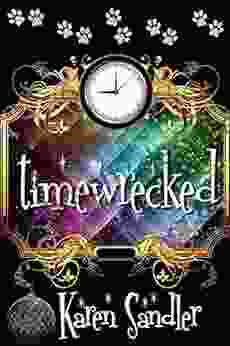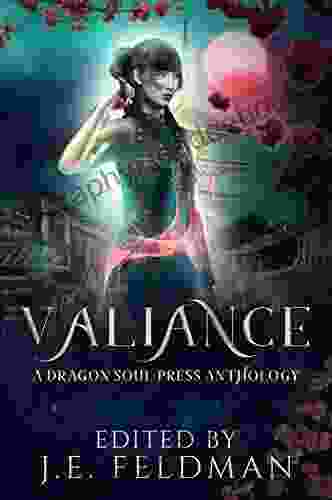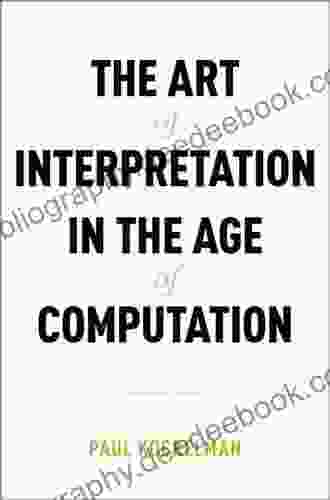The Art of Interpretation in the Age of Computation: Unveiling the Hidden Meaning in a Digital Landscape

In the burgeoning digital realm where information flows like an incessant river, the art of interpretation has taken on a new dimension. As computational systems become increasingly sophisticated, they present us with unprecedented opportunities and challenges in discerning the meaning of vast and complex data. This article delves into the evolving nature of interpretation in the age of computation, exploring the interplay between human cognition, machine learning, and the quest for understanding.
The advent of artificial intelligence (AI) and natural language processing (NLP) has ushered in an era where machines can generate text, images, and even music with remarkable proficiency. Machine-generated content is becoming ubiquitous, blurring the lines between human and artificial creation. This poses novel questions about the role of interpretation in assessing the meaning and significance of such content.
Machine-generated content offers several advantages:
4.5 out of 5
| Language | : | English |
| File size | : | 2981 KB |
| Text-to-Speech | : | Enabled |
| Screen Reader | : | Supported |
| Enhanced typesetting | : | Enabled |
| Print length | : | 245 pages |
| Lending | : | Enabled |
- Increased Efficiency and Scalability: AI-powered systems can generate vast quantities of content quickly and at a much lower cost than human-created content.
- Objectivity and Consistency: Machine algorithms are not susceptible to biases or emotions, ensuring objectivity and consistency in content production.
- Insights from Unstructured Data: AI can uncover hidden patterns and insights from vast amounts of unstructured data, such as social media feeds and customer reviews.
However, machine-generated content also presents challenges:
- Lack of Human Context and Emotion: Machines lack the human experience and emotions that contribute to the richness and nuance of human-generated content.
- Potential for Bias: AI systems can inherit biases from the data they are trained on, leading to skewed or unfair results.
- Difficulty in Discerning Authorship: As machine-generated content becomes more sophisticated, it becomes increasingly difficult to distinguish between human and artificial creation.
Despite the advances in machine learning, human interpreters remain essential in the interpretation process. Human cognition provides unique capabilities that complement computational analysis:
- Critical Thinking and Perspective: Humans possess critical thinking skills and a broader perspective, enabling them to evaluate and synthesize information from multiple sources.
- Cultural and Contextual Understanding: Human interpreters bring cultural and contextual knowledge to the interpretation process, helping to decipher the subtle nuances and meanings that machines may miss.
- Ethical and Value-Based Judgement: Humans have the ability to consider ethical and value-based implications, which machines cannot fully replicate.
The art of interpretation is not a zero-sum game between humans and machines. Rather, it involves a collaborative relationship where each party plays a distinct and complementary role.
A synergistic approach to interpretation leverages the strengths of both humans and machines:
- AI for Data Mining and Pattern Recognition: Machines can sift through vast amounts of data quickly and efficiently, identifying patterns and relationships that may be beyond human perception.
- Human Expertise for Contextualization and Interpretation: Human interpreters can provide context, evaluate the significance of patterns, and draw meaningful s from the data.
AI can augment human interpretation by providing tools and insights that enhance the process:
- Natural Language Understanding: NLP systems can assist interpreters by extracting key concepts and summarizing large amounts of text.
- Visualization Tools: Interactive visualizations can help interpreters explore complex datasets and gain a deeper understanding of the information.
- Automated Bias Detection: AI algorithms can flag potential biases in data or generated content, helping interpreters to address them.
The art of interpretation in the age of computation raises important ethical questions:
- Transparency and Accountability: It is crucial to ensure transparency about the role of machines in content generation and interpretation.
- Avoiding Bias and Discrimination: Interpreters must be vigilant in mitigating biases that may lead to unfair or discriminatory outcomes.
- Preservation of Human Judgement: It is essential to prevent AI from eclipsing human judgement and to maintain the human element in the interpretation process.
The art of interpretation in the age of computation is a dynamic and evolving field. While computational systems provide powerful tools for data analysis and content generation, the role of human interpreters remains paramount. Through a collaborative relationship between humans and machines, we can unlock the full potential of the digital landscape, extracting meaningful insights while safeguarding ethical considerations. The art of interpretation in the age of computation is a journey of discovery and understanding, where the human mind and computational power intertwine to reveal the hidden meaning in a world of vast and complex data.
4.5 out of 5
| Language | : | English |
| File size | : | 2981 KB |
| Text-to-Speech | : | Enabled |
| Screen Reader | : | Supported |
| Enhanced typesetting | : | Enabled |
| Print length | : | 245 pages |
| Lending | : | Enabled |
Do you want to contribute by writing guest posts on this blog?
Please contact us and send us a resume of previous articles that you have written.
 Page
Page Chapter
Chapter Text
Text Story
Story Genre
Genre Reader
Reader Library
Library Magazine
Magazine Bookmark
Bookmark Shelf
Shelf Foreword
Foreword Preface
Preface Scroll
Scroll Codex
Codex Tome
Tome Classics
Classics Library card
Library card Memoir
Memoir Reference
Reference Dictionary
Dictionary Resolution
Resolution Librarian
Librarian Catalog
Catalog Borrowing
Borrowing Periodicals
Periodicals Study
Study Research
Research Scholarly
Scholarly Lending
Lending Reserve
Reserve Academic
Academic Reading Room
Reading Room Rare Books
Rare Books Special Collections
Special Collections Literacy
Literacy Study Group
Study Group Thesis
Thesis Dissertation
Dissertation Reading List
Reading List Theory
Theory Blake Shelton
Blake Shelton June Pearton
June Pearton Ann Quin
Ann Quin J Sterling
J Sterling Katie Ruggle
Katie Ruggle Anne Peterson
Anne Peterson Christine Bailey
Christine Bailey Javier Cercas
Javier Cercas Cedric De Coning
Cedric De Coning Dean Cochran
Dean Cochran Gadi Wolfsfeld
Gadi Wolfsfeld Dejan Sekulic
Dejan Sekulic Charles Sid Heal
Charles Sid Heal Lisa Phillips
Lisa Phillips Prateek Joshi
Prateek Joshi Delicious Tacos
Delicious Tacos Elizabeth Robins Pennell
Elizabeth Robins Pennell Serena Faber Nelson
Serena Faber Nelson Gretchen E Minton
Gretchen E Minton Christy Leos
Christy Leos
Light bulbAdvertise smarter! Our strategic ad space ensures maximum exposure. Reserve your spot today!

 Alexandre DumasTimewrecked: A Middle Grade Time Travel Adventure That Will Keep You on the...
Alexandre DumasTimewrecked: A Middle Grade Time Travel Adventure That Will Keep You on the... Nathaniel PowellFollow ·13.4k
Nathaniel PowellFollow ·13.4k Esteban CoxFollow ·12.8k
Esteban CoxFollow ·12.8k Miguel NelsonFollow ·13.9k
Miguel NelsonFollow ·13.9k Jack PowellFollow ·2.8k
Jack PowellFollow ·2.8k Stuart BlairFollow ·2.5k
Stuart BlairFollow ·2.5k Nathaniel HawthorneFollow ·10.9k
Nathaniel HawthorneFollow ·10.9k Robert FrostFollow ·6.3k
Robert FrostFollow ·6.3k Milan KunderaFollow ·8k
Milan KunderaFollow ·8k

 Braden Ward
Braden WardFeminism's Forgotten Fight: The Ongoing Battle for...
The feminist movement has historically...

 Julio Cortázar
Julio CortázarBlue Heaven Black Night: A Literary Journey Through Love,...
In the realm of...

 Eddie Bell
Eddie BellA Journey Through Time: Exploring the Enchanting World of...
The vibrant tapestry of New...

 Lawrence Bell
Lawrence BellValiance Dragon Soul Press Anthology: A Literary Odyssey...
Step into a realm where...

 Aron Cox
Aron CoxEmbark on a Creative Odyssey with Jean Leinhauser's "101...
Unveil a Kaleidoscope of...
4.5 out of 5
| Language | : | English |
| File size | : | 2981 KB |
| Text-to-Speech | : | Enabled |
| Screen Reader | : | Supported |
| Enhanced typesetting | : | Enabled |
| Print length | : | 245 pages |
| Lending | : | Enabled |












